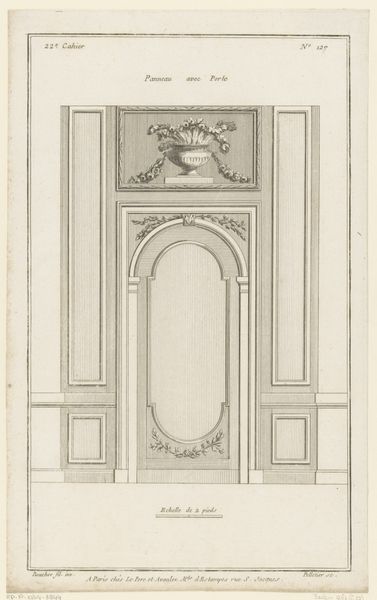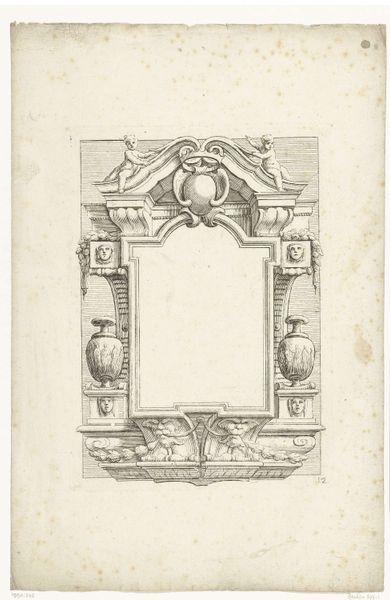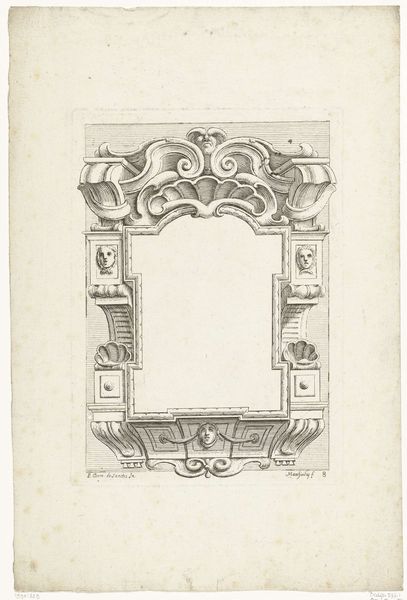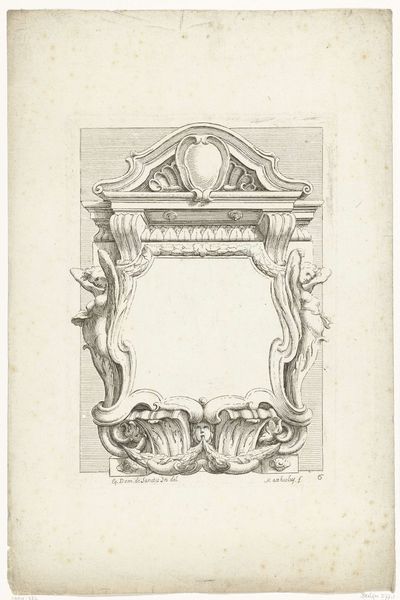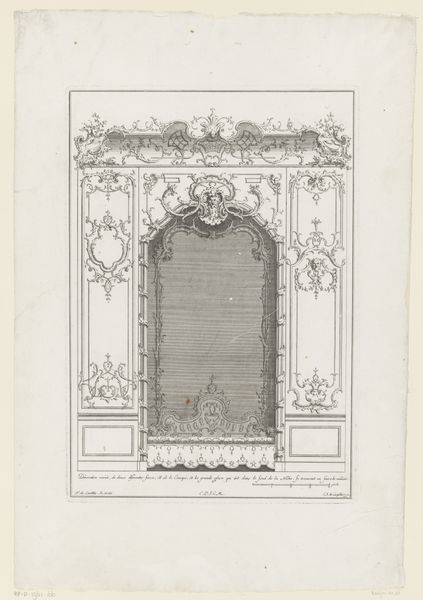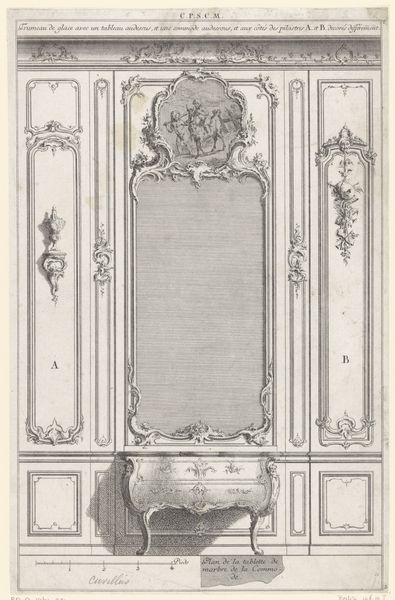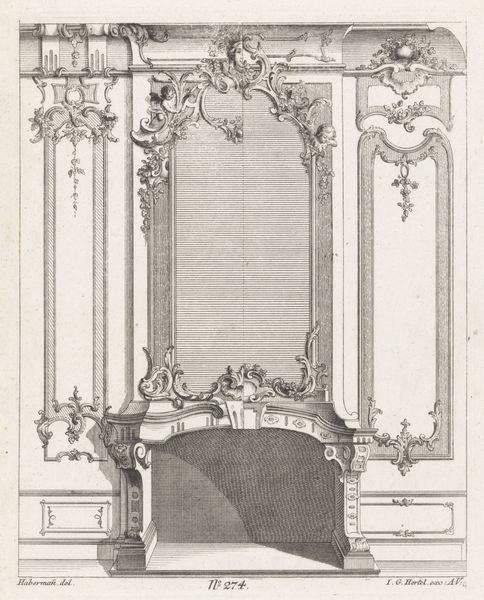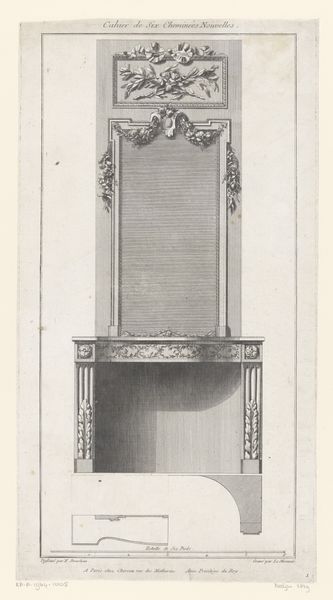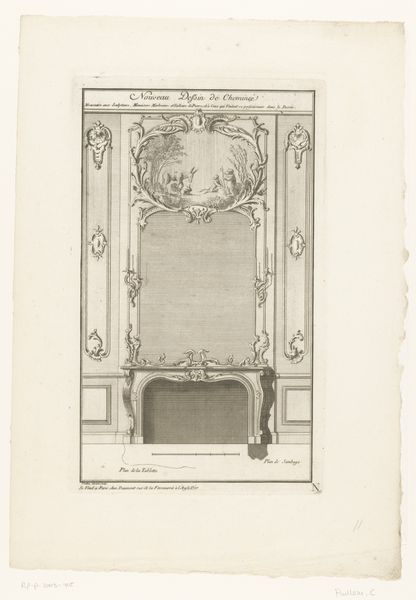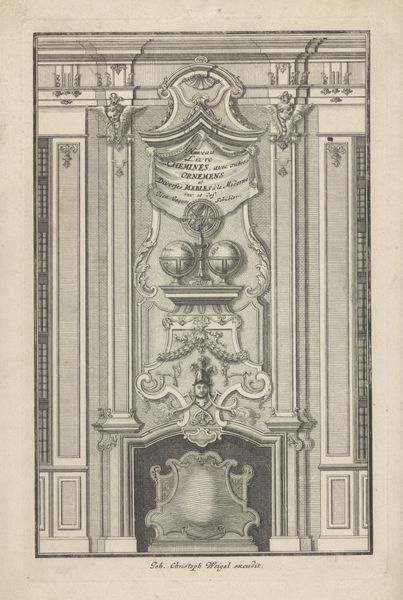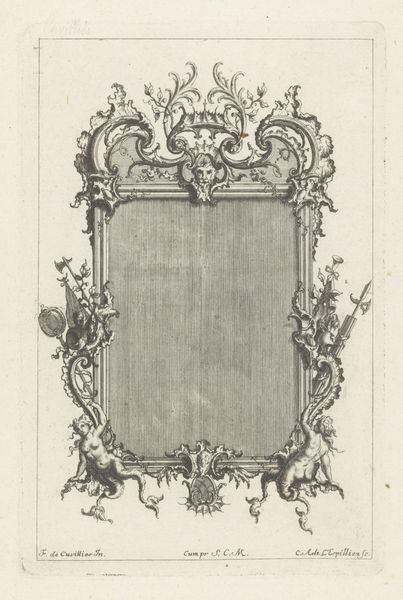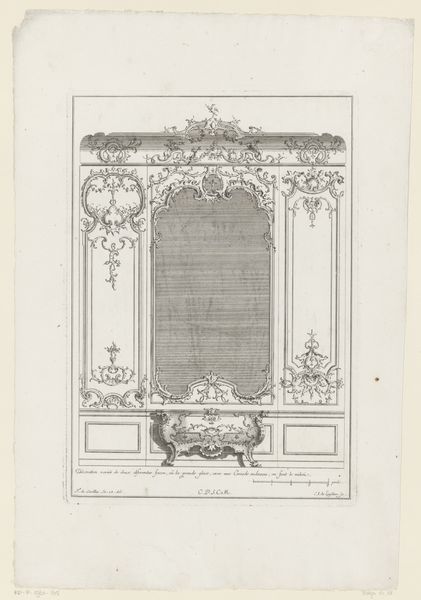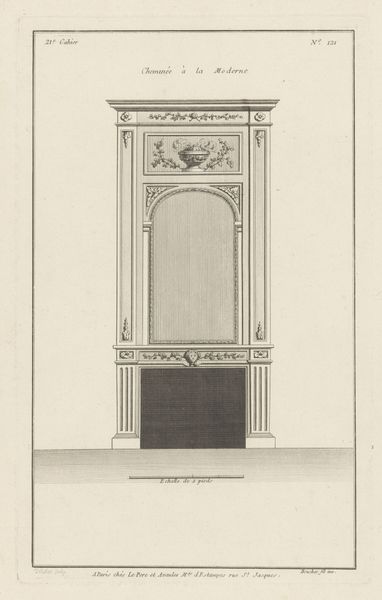
drawing, paper, engraving
#
drawing
#
neoclacissism
#
paper
#
form
#
line
#
history-painting
#
academic-art
#
engraving
Dimensions: height 362 mm, width 228 mm
Copyright: Rijks Museum: Open Domain
Curator: Looking at this piece, I’m struck by the inherent stillness and symmetry. The fine lines create a sense of architectural composure and controlled elegance. Editor: Indeed. Here we have Jean François de Neufforge's "Spiegel boven tafel," dating back to 1763. Considering Neufforge's role during a politically turbulent era, this engraving presents a vision of domestic stability and aristocratic self-regard, a kind of stage setting against a backdrop of revolution. Curator: Semiotically, the empty space for the mirror almost speaks louder than any content could. The composition—the placement of that central void against these intricate, classically-inspired patterns—is masterful. Editor: Exactly! This piece showcases Neoclassical ideals within the decorative arts. Reflect on the elite's obsession with appearances and interior design—manifestations of their power structures. Note also, that these designs became more widespread, representing shifting social aspirations. Curator: The way the light falls even within the engraving, accentuating the depth and the textures of the stone carving is intriguing. It is not simply a plan, it possesses a quality of three-dimensionality through line. Editor: That line quality serves to reinforce rigid gender norms through displays of luxury goods. Such designs acted as signifiers within elite social circles that bolstered hierarchies of taste and exclusivity. The very act of meticulously depicting these idealized forms normalizes power relations within interior spaces. Curator: And, by extension, the lack of figuration directs focus upon form, which has always proved a way of escaping representational duties toward prevailing issues of a time. Editor: A fair point, but I see Neufforge’s composition not merely as escape, but as a way of reinforcing status—one deeply enmeshed within the sociopolitical frameworks of the time. Still, examining the lines is such a simple entry to begin unraveling these contexts. Curator: I appreciate how our separate entry points into this artwork are equally revealing. Editor: Yes, finding harmony between form and history is key to a fuller view of art.
Comments
No comments
Be the first to comment and join the conversation on the ultimate creative platform.
